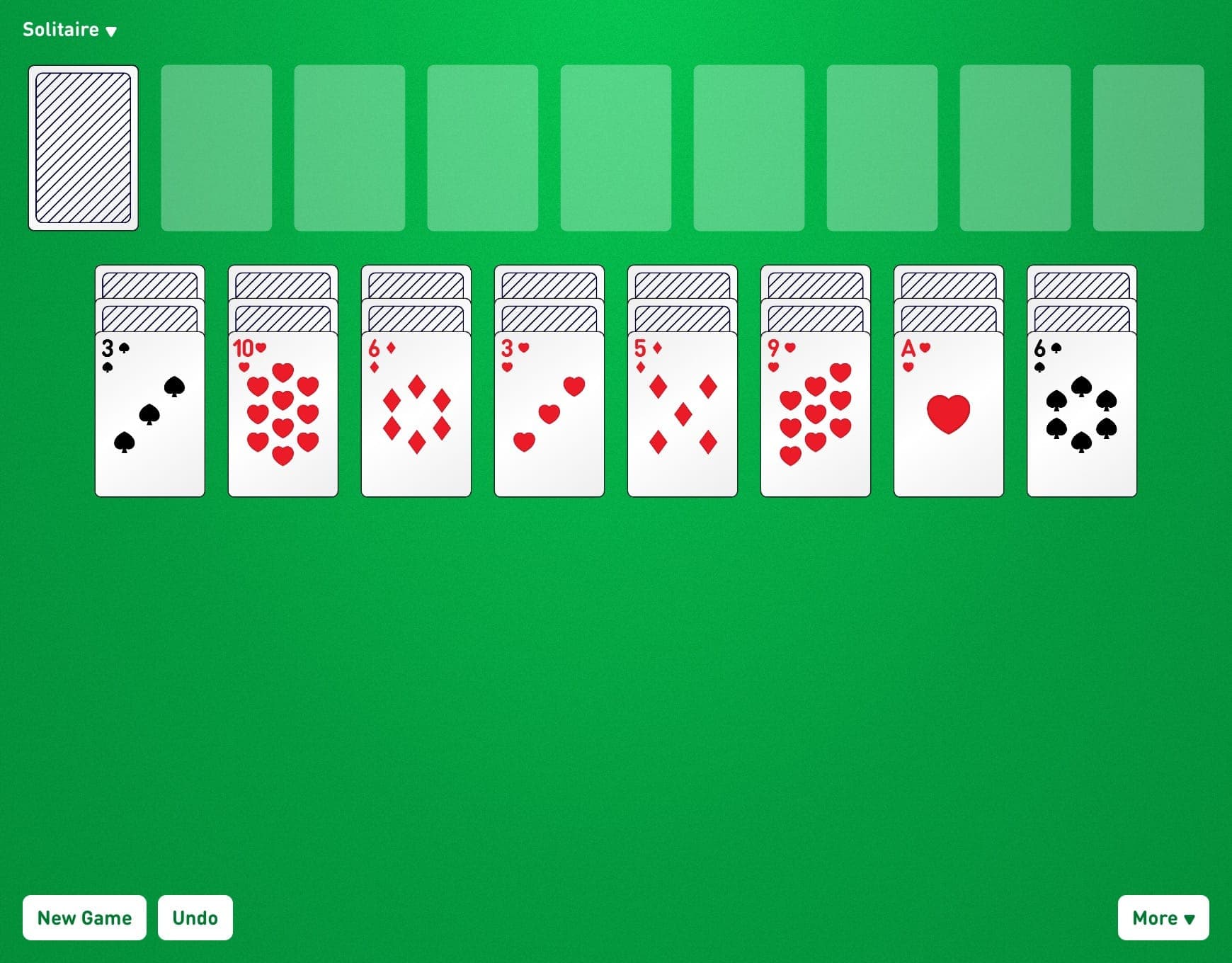Play Double Easthaven Solitaire Online for Free (No Signup Required)
Double Easthaven is a fun Solitaire variation and is free to play online. A feature-rich full-screen card game with daily challenges, winnable deals, hints, and undo's.

Easthaven has two levels. The game is difficult, with a 10% chance of winning. It is played with two decks, and your odds of victory are primarily determined by your talent.
The game is comparable to others such as Easthaven and Triple Easthaven.
If you enjoy Double Easthaven, try original Solitaire, a classic solitaire card game.
We are constantly modifying our website in response to customer input. Please contact us if you have any comments or questions.
Have a good time playing!
How to play Double Easthaven Solitaire
Layout:
8 foundation piles: Build up from Ace to King in the same suit.
8 tableau piles: Alternate color build down. If groups of cards are in sequence, move them down by alternate color. Fill in the blanks with any card or lawful card sequence. At the start of the game, each pile is given three cards, two face-down and one face-up.
Stock: By clicking on the Stock, you can deal one card to each tableau pile.
Foundation:
There are eight foundation piles.
Any ace in the foundation may be transferred to any vacant pile.
A card may be added to a foundation pile if it is one higher than the pile's previous top card and is of the same suit. As a result, the only card that could be played on a Q of hearts is a K of hearts. There can be no more than 13 cards in a pile.
Cards cannot be taken from the foundation after they have been placed.
Tableau:
Splayed downhill, eight tableau piles of three cards each. The top card in each pile is dealt face-up, while the remaining cards are dealt face-down.
A card may be added to a tableau pile if it is one lower than the pile's previous top card and is of the opposing color. Thus, the cards that might be played on the ten of diamonds are nine of spades or nine of clubs.
Cards on the tableau that are not covered by another card are free to be played onto the foundation or any other tableau pile.
Any card can fill an empty slot in the tableau.
If the cards are alternately red and black, groups of cards in succession from high to low can be shifted from one tableau column to another.
Stock:
The stock is made up of leftover cards.
When you click on the stock, a card is dealt to the top of each tableau pile.